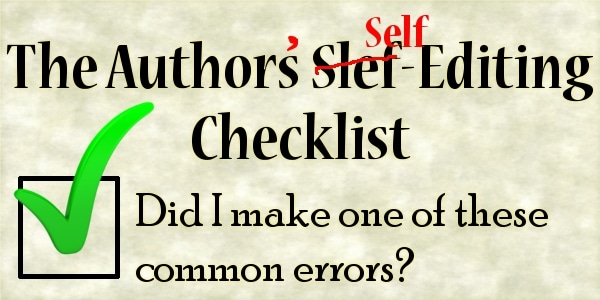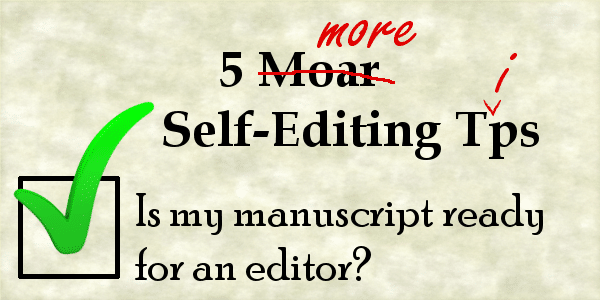
Do you make stupid mistakes in your writing? I sure do! Like unfinished lumber, your manuscript is going to be full of knots and splinters, cracks, chips, and ragged bits. You’re going to send it off to your editor, and you probably pay by the word, not the error, but you don’t want to send stuff you can fix yourself. You want to get your draft as clean as you can, and have the professional fix the stuff you can’t find, either because they know grammar and spelling better than you, or because you mentally fix your own words in your head as you read them, regardless of what the page says.
You’re going to want to pore over your words, but there are a few quick things you can do to speed up the process of catching some repeat offenders.
- Find/Replace double-space with single space – There is no reason that comes to mind where you’d want multiple spaces in a row. If there is in your work, just make a note of it and go back to fix it. Note: if you’re paranoid that you left three spaces in a row somewhere, just do this twice.
- Find/Replace period-space-quote with just period-quote – You can accidentally insert a space between a period and a quote as you write. Maybe you deleted a word at the end, or maybe you just got trigger-happy on the spacebar. We’re not here to judge.
- Add proper nouns to your spell checker, including possessive forms and adjective forms (if you’ve made up place names, for example) – Mispellings of proper nouns are tough on your editor. They’re not as familiar with these names as you are, and there’s no dictionary to check them against. If you go 50/50 on spelling for a name, they may not even be able to tell which is the correct spelling.
- Though/through/thought – Do a search for each of these. It’s time-consuming, but these are easy words to mix up, since they’re common, long (compared to articles, not chemical or disease names). Make sure the right word is used in context.
- They’re/there/their – Same for these friendly homonyms.
- It’s its – Depending how good you are with this one, you might only need to search for one or the other, but searching through for both is safest.
- A/An – OK, this one sounds daunting, but there’s a trick. You only care about using “a” when a vowel follows, so search for ” a a”, ” a e”, ” a i”, ” a o”, and ” a u”. Remember the preceding space, so you don’t catch words that just end in “a”. You can do the same for “an” and all the consonants. If it sounds like a lot of work, consider reading through your whole manuscript and looking for them while also looking for anything else that might be wrong.
- Further/Farther – This is really getting into personal issues now. Everyone is going to have their own particular words or word groupings that they routinely mistype. If you’re not sure which you have problems with, browse this list of commonly misused words
- Overused words (your style) – This isn’t a check for outright errors so much as it’s a listing of words or phrases that you know you have a habit of overusing. Search through to see where you’re using these catch-phrases and pet words. Prune to taste.
This isn’t an exhaustive list. This is a template for you to breeze through your manuscript a few times and catch some of the egregious things that are wrong, and some of the hard to notice stuff that your eyes gloss over. Once you’ve been over it with the rough sandpaper, take a finer grit and go read through the whole thing, knowing that a lot of the minutia have been dealt with.


0 Comments